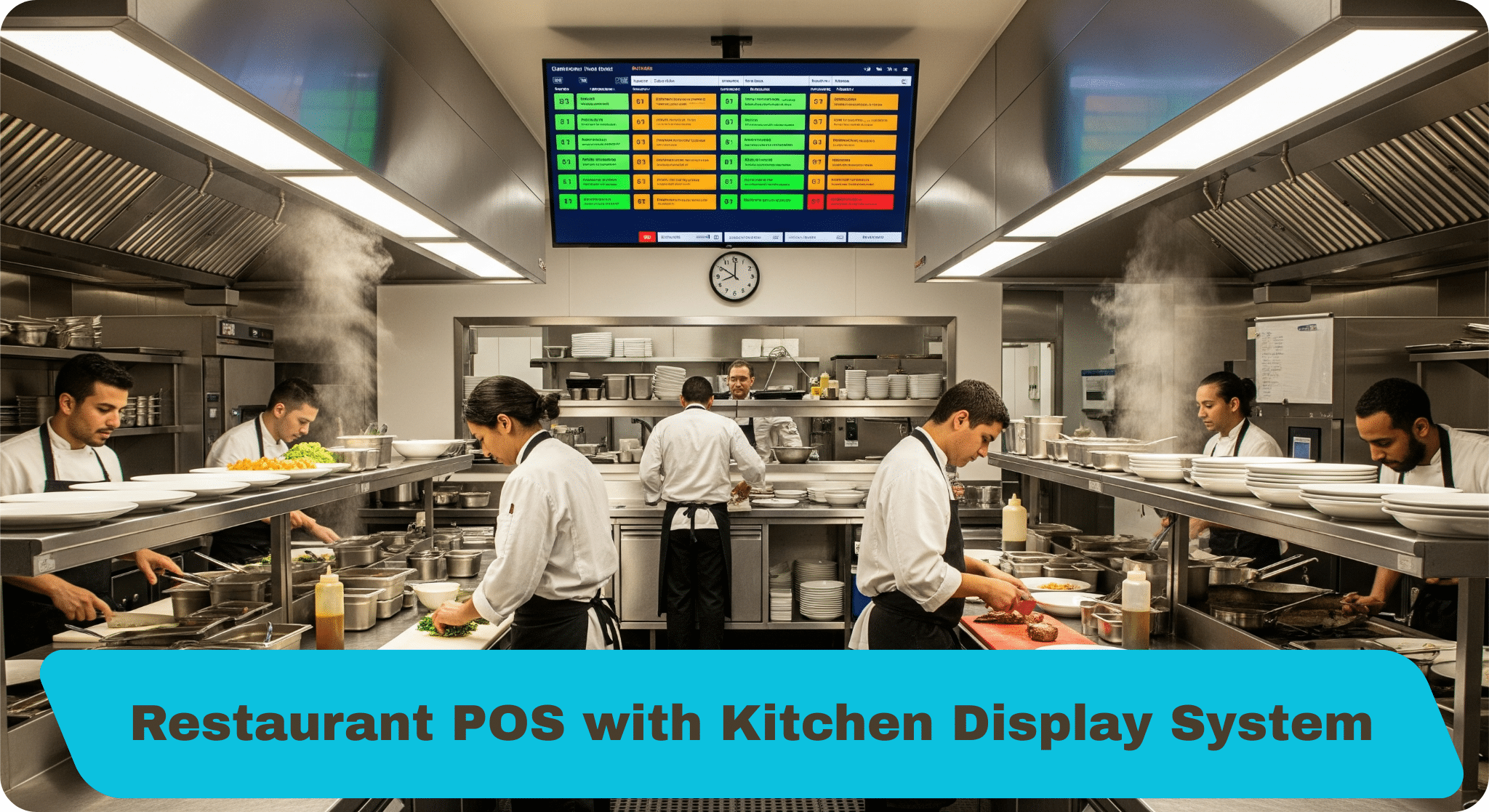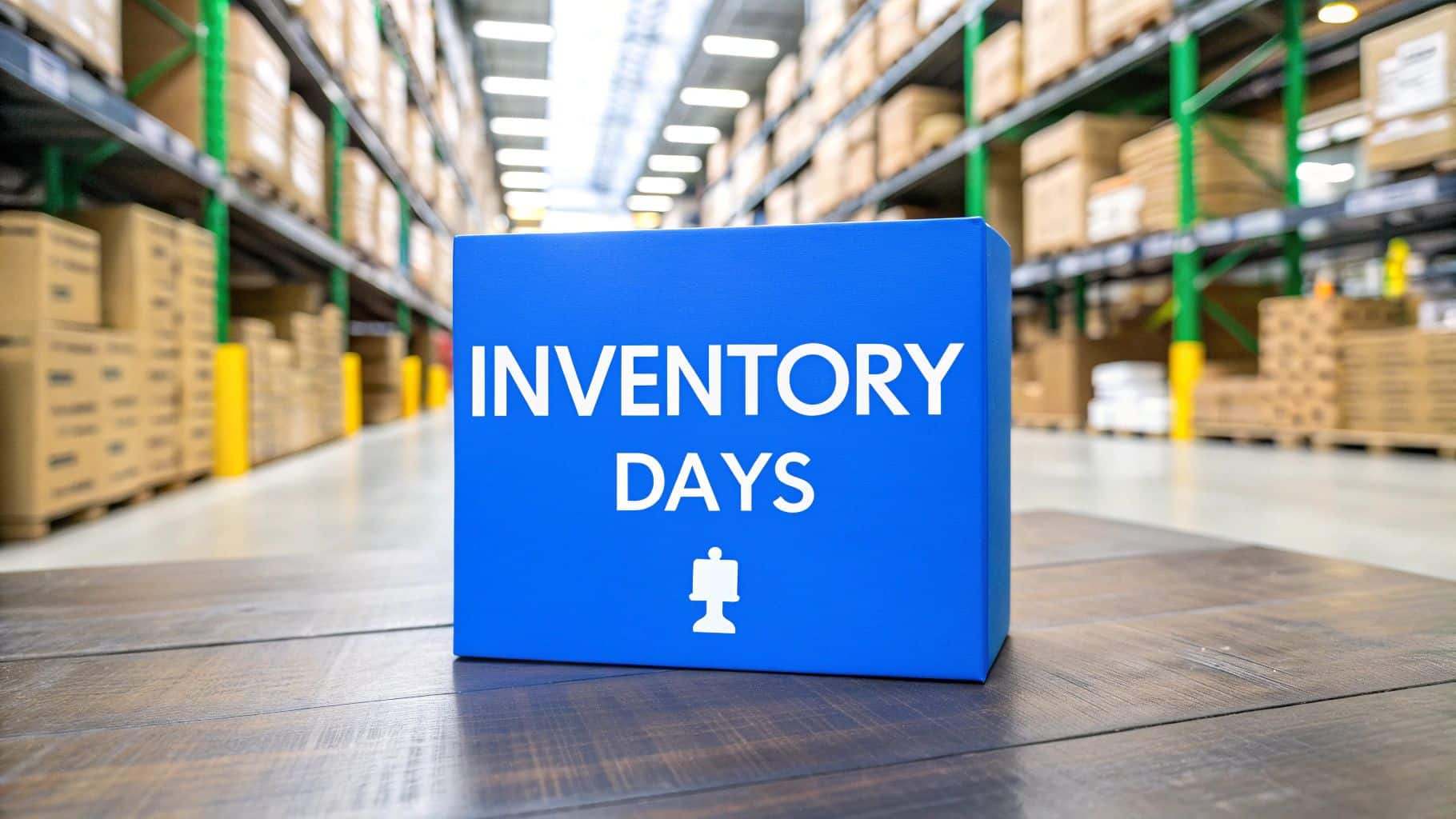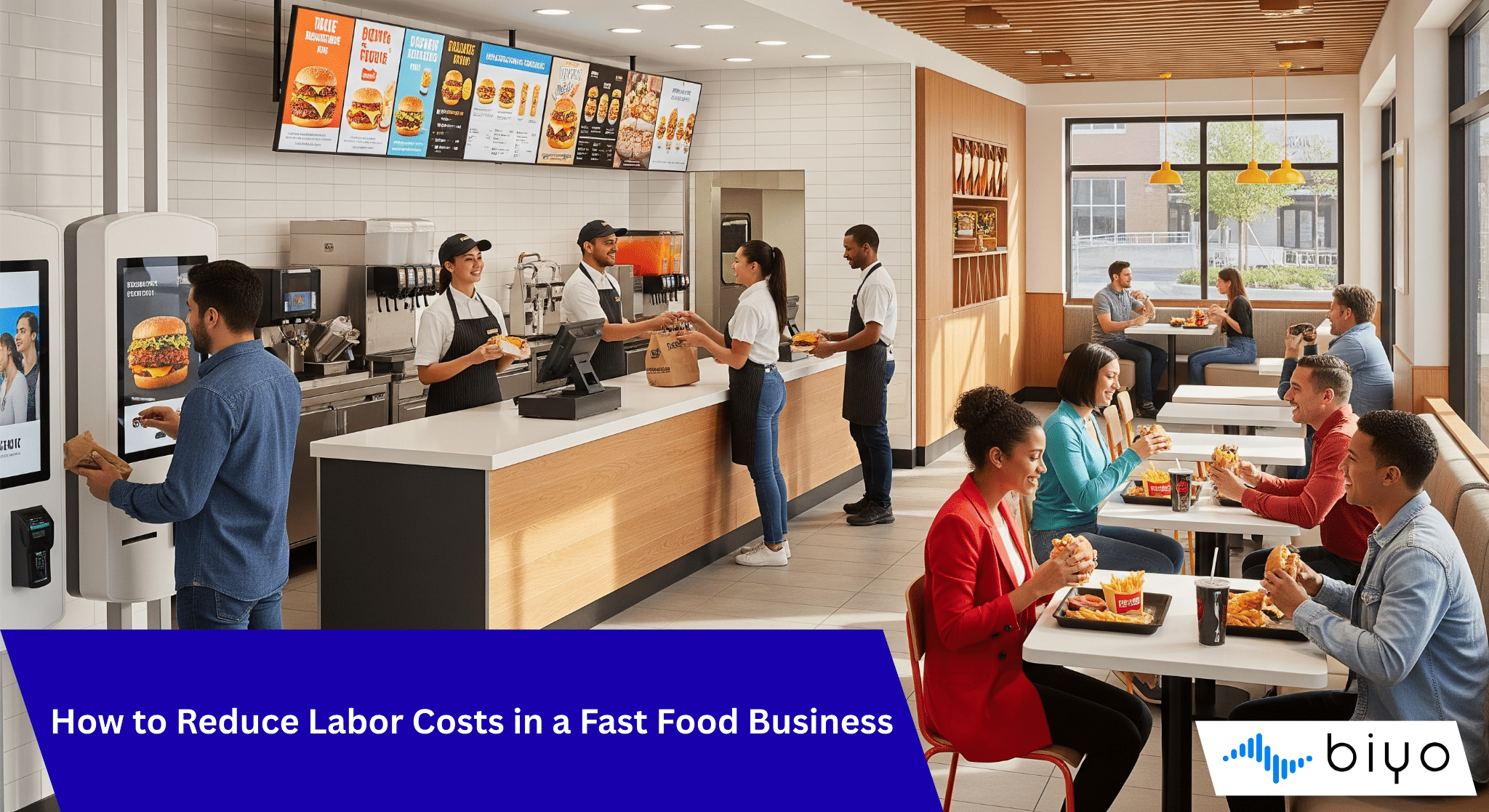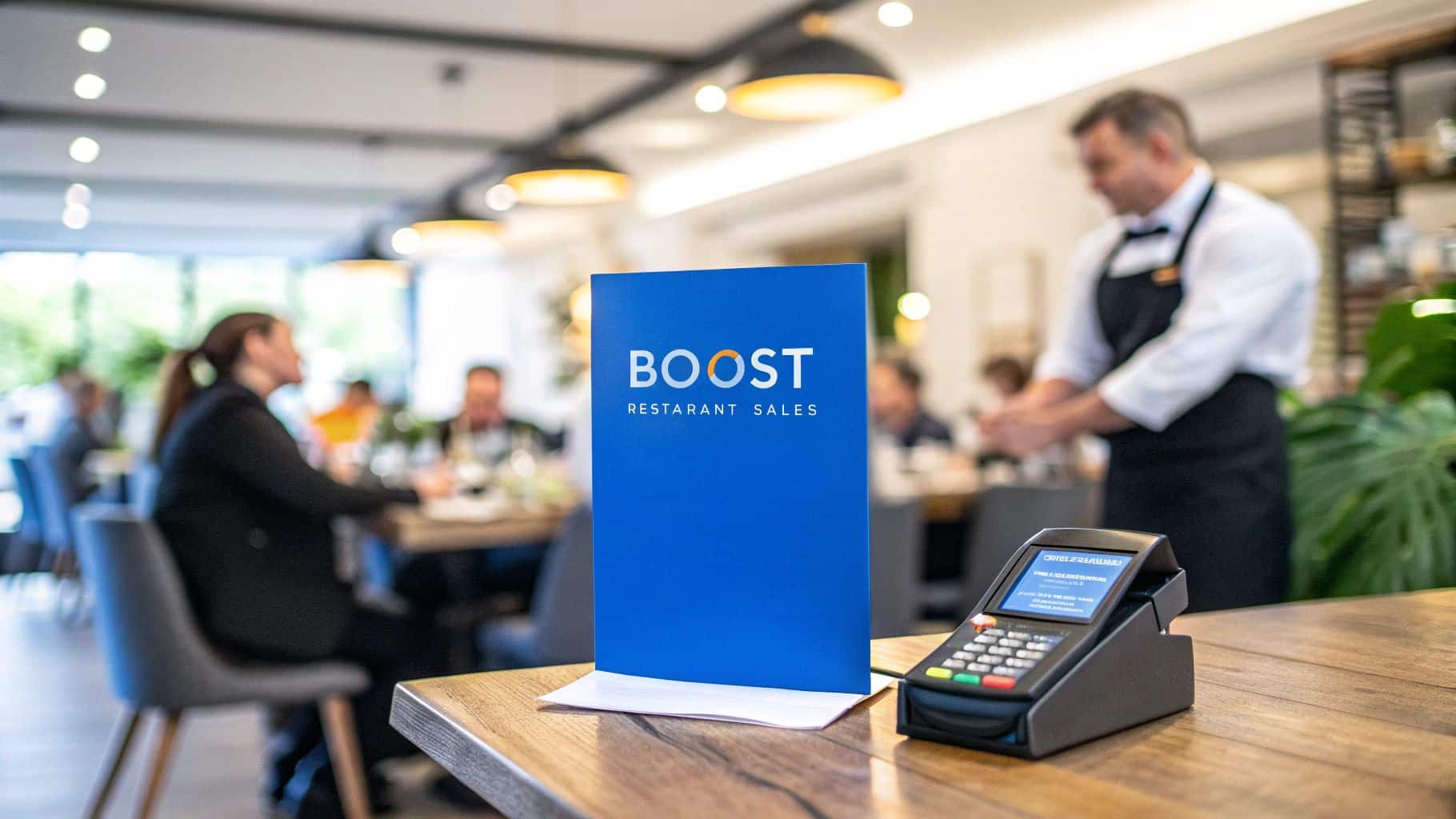Think of your point of sale software as more than just a cash register. Effective training turns your staff into power users who can speed up checkouts, slash errors, and keep inventory humming. It’s what transforms that POS system into the true hub of your business, making sure you get every penny’s worth out of your investment.
Why Effective POS Training Is a Game Changer
Seeing your POS as just a way to take payments is a massive missed opportunity. Modern systems, like Biyo POS, are the central nervous system for a small business, managing everything from sales figures to customer loyalty. If you don’t train your team properly, you’re leaving money on the table.
It’s simple, really. When your staff feels confident using the system, transactions fly by, and customers leave happier. That confidence also cuts down on the kind of costly mistakes—like applying the wrong discount or ringing up the wrong item—that can slowly bleed your profits dry. Plus, better training means more accurate inventory, so you’re not running out of best-sellers or getting stuck with products that won’t move.
The Real Cost of Untrained Staff
An employee fumbling with the POS during a lunch rush creates an instant bottleneck. Those small moments of hesitation when processing a return or splitting a bill add up, frustrating customers and stressing out the whole team.
This is why structured point of sale software training isn’t just another expense—it’s a direct investment in a smoother, more stable operation. Knowing how to sidestep common mistakes is a big part of staying afloat. You can learn more by exploring the primary reasons behind the high restaurant failure rate and how to overcome them.
The goal is to build muscle memory. When an employee is face-to-face with a customer, their actions need to be swift and sure-footed, not hesitant and uncertain.
This idea holds true for any service-based business. Just like you’d expect a barista to go through proper UK barista training courses to master their craft, solid POS training is just as crucial for running a tight ship.
The numbers back this up. The global POS software market is expected to hit USD 42.5 billion by 2027—a huge leap from USD 12.2 billion in 2018. As cloud-based platforms take over and businesses replace systems that are over five years old, thorough training is the only way to make sure staff can actually use all the new bells and whistles.
Building Your POS Training Blueprint
Jumping into training without a clear plan is like trying to cook a new recipe without reading the instructions. You might end up with something edible, but you definitely won’t get the intended result. A solid blueprint for your point of sale software training is essential to make sure every session counts and actually helps your team.
It all starts with a simple needs assessment. You don’t need a complicated survey for this; just watch your team during a busy shift.
Is your cashier fumbling when a customer wants to split a bill? Does your manager know how to pull up a sales report from last Tuesday? These are the real-world skill gaps you need to find. Identifying these weak spots for each role is the first step toward building a plan that works.
Set Clear and Measurable Goals
Once you know where the gaps are, you can set real, tangible goals. “Get better at the POS” isn’t a goal; it’s a wish. We need to get specific. A good goal is something you can actually measure and track over time.
Think along these lines:
- For Cashiers: Cut down the average transaction time by 15% within two weeks of training.
- For Inventory Staff: Reduce manual counting errors by 25% by becoming experts on the Biyo POS stock-take feature.
- For Everyone: Ensure 100% of staff can correctly process three tricky transactions (like a split payment, a gift card, and voiding a sale) in a practice setting.
Targeted training like this can have a massive impact on how smoothly your business runs.

As you can see, giving your team the right skills transforms a simple checkout process into a powerhouse of efficiency. Make sure these smaller training goals also feed into your bigger business objectives. If you’re struggling to connect the dots, thinking about why your restaurant needs a killer mission statement can help align everything you do, including training, with your core mission.
Finally, map out a realistic schedule. Nobody learns well in a marathon four-hour session. Instead, aim for shorter, punchy training blocks of 20-30 minutes during slow periods. This keeps your team engaged, minimizes disruption, and makes the information much easier to remember.
Designing a Training Program That Actually Works
If you’ve ever tried a one-size-fits-all training program, you know how quickly that information gets forgotten. To make your point of sale software training stick, you have to think about how your team actually learns. Some people need to see it, some need to do it, and almost nobody learns well by just reading a manual.
The most effective approach is a blended one. Think of it as a learning cocktail: mix some hands-on practice in a safe “sandbox” environment with short, digestible video tutorials. For instance, a quick two-minute video can walk someone through processing a tricky refund in Biyo POS, showing every single click. It’s the perfect tool for your visual learners.

Then there’s the on-the-job support. You can’t beat a good old-fashioned quick-reference guide. A simple, laminated cheat sheet taped next to the register can be a lifesaver, reminding staff of specific discount codes or the steps for a task they don’t do every day. This keeps knowledge accessible right when it’s needed most—during a busy shift.
Blending Methods for Maximum Impact
An effective program recognizes that a cashier needs to know different things than a manager. You wouldn’t train an inventory specialist the same way you train a brand-new server. The goal is to get the right information to the right person.
Here are a few ways to blend your training methods:
- For New Hires: Get them started in a training mode or sandbox environment. Let them ring up fake orders, apply discounts, and void sales without any real-world consequences. It’s all about building confidence and muscle memory.
- For Visual Learners: Build a library of short screen-recording videos. Keep each one focused on a single task, like “How to Split a Check” or “Adding a New Customer to the System.”
- For On-the-Go Refreshers: Create simple one-page PDFs or cheat sheets that can be pulled up on a tablet or printed out. These are fantastic for reinforcing procedures that aren’t part of the daily routine.
To keep everyone on the same page, a crucial part of this process involves creating standard operating procedures. This documentation becomes the foundation for your quick-reference guides and ensures every employee follows the correct process, every single time.
POS Training Methods for Different Roles
Tailoring the training to each role is what makes it truly effective. A new cashier doesn’t need a deep dive into inventory reporting on day one. Here’s a breakdown of how you can approach this for different team members.
| Employee Role | Primary Training Method | Key Skills to Master |
|---|---|---|
| Cashier / Server | Hands-on practice in a sandbox environment, plus quick-reference guides. | Processing payments, applying discounts, handling returns/voids, splitting checks. |
| Store Manager | In-depth tutorials and a full system walkthrough. | End-of-day reporting, managing staff permissions, troubleshooting common issues, inventory adjustments. |
| Inventory Specialist | Focused video modules and hands-on practice with the backend system. | Adding new products, managing stock levels, generating purchase orders, running inventory reports. |
This targeted approach ensures that everyone gets the specific knowledge they need to excel in their job without feeling overwhelmed by irrelevant features. It’s about making the training practical and immediately useful.
The global POS software market is projected to jump from USD 18.3 billion in 2022 to USD 37.0 billion by 2027, and that growth is fueled by increasingly complex systems. Modern POS platforms do so much more than just take payments; they are the central hub for sales, inventory, and customer data. That’s why a smart training strategy is no longer a “nice-to-have”—it’s essential for reducing errors and keeping your operations running smoothly.
Getting Hands-On with Real-World Scenarios
Knowing the theory is one thing, but true confidence with your POS system comes from actually using it. This is where you shift from talking about features to building real muscle memory. The goal is simple: make the system feel second nature to your team.
The best way to do this is with engaging, interactive sessions that mimic the daily grind. Don’t just show them the payment screen—make them run through the most complex, multi-step transactions they’ll ever face.
Create a Safe Place to Fail
It’s absolutely critical to give your team a space where mistakes are okay. In fact, they should be encouraged. This is how people truly learn. Most modern systems, like Biyo POS, have a dedicated training mode or sandbox environment. This is your playground.
Let them get their hands dirty. Challenge them to process a messy return, split a payment three ways, or void a huge order. When an error message inevitably pops up, it’s not a panic moment—it’s a teaching moment.
When your team feels safe to make mistakes during training, they build resilience. That way, they won’t freeze up when they’re face-to-face with a real, impatient customer.
This approach flips the script from passive listening to active problem-solving. It builds the kind of confidence that only comes from doing.
Mimic the Pressure of a Busy Day
Once they’ve got the basics down, it’s time to turn up the heat a little. You want to simulate the pressure of a real rush so they learn to think on their feet while still being accurate.
Here are a few scenarios I’ve seen work wonders in training:
- The Complicated Exchange: A customer wants to exchange an item for a more expensive one and pay the difference with a gift card that doesn’t quite cover it.
- End-of-Day Close-Out: Have your managers run the Z report, count the drawer, and practice spotting and resolving a $10 discrepancy.
- The Multi-Tender Mess: Challenge your cashier to process a single sale paid for with a credit card, a gift certificate, and the rest in cash.
When your staff has run through these drills over and over, their response becomes automatic. That means faster service, fewer errors, and a much smoother experience for everyone involved.
Measuring Success and Providing Ongoing Support
Your initial POS software training is just the beginning. To really get your money’s worth, you need a way to see what’s working and keep supporting your team long after the first session ends. This isn’t about giving pop quizzes; it’s about watching for real improvements on the floor and making learning a continuous part of the job.
Start by looking at simple, tangible metrics. Are you noticing fewer voided sales or corrected orders during a busy dinner rush? Is the average checkout time getting faster? These are the key performance indicators (KPIs) that tell you your team is getting more comfortable and confident with the new system. When staff can fly through transactions, it has a real impact on your bottom line, a crucial point we cover in our guide on how to increase restaurant sales with proven strategies.

Fostering a Culture of Continuous Learning
Ongoing support is what separates good training from great performance. You want to build an environment where nobody feels silly asking a question and help is always easy to find.
A simple but effective tactic is to create a shared digital folder—think Google Drive or Dropbox—with all your training materials. Fill it with quick-reference guides, short video tutorials, and any new procedural docs.
Another great idea is to designate a “POS champion” on your team. This is your go-to person, someone who actually enjoys using the system and can give quick, informal help to their colleagues.
Ongoing training isn’t an admission of failure; it’s a commitment to excellence. Regular, brief refreshers keep skills sharp and ensure your team adapts seamlessly to new software updates.
The market for POS software is growing fast—projected at a CAGR of 10.8% from 2023 to 2030, eventually hitting USD 27.71 billion. This growth means systems are always evolving, adding powerful analytics and management tools. Continuous training is the only way your staff can keep up and use these features to make smarter business decisions. You can dive deeper into this market growth on Grand View Research.
Answering Your Team’s Top POS Training Questions
Even with the best training plan in the world, you’re going to get questions. That’s a good thing! It means your team is engaged. Being ready for those common queries helps everyone feel more confident and keeps the training on track.
Let’s walk through some of the questions I hear most often from both managers and front-line staff.
How Long Does This Actually Take for a New Hire?
There’s no one-size-fits-all answer here, as it really boils down to the person’s role and how complex your POS is.
For a new cashier who just needs to master ringing up sales and processing payments, you can probably get them up to speed in 2-4 hours of solid, hands-on practice.
But for a shift lead or manager? They’ll need to learn the ropes on inventory, pulling sales reports, and setting staff permissions. For them, you should budget more like 8-10 hours, maybe broken up over a couple of days. The key is to get them comfortable with their essential, day-to-day tasks first before diving into the more advanced stuff.
What’s the Best Way to Handle Software Updates?
When a new software update rolls out, don’t overwhelm your team with a massive retraining session. It’s usually just a few tweaks, not a whole new system. Think small and targeted.
Here’s a simple, effective approach:
- First, have a manager or team lead quickly scan the update notes to see what’s actually new.
- Then, hold a quick 15-minute huddle to walk through the changes. A short screen-recording video you can share also works great.
- Finally, make sure to update any printed cheat sheets or quick-reference guides you have near the terminals.
This micro-learning method is a lifesaver. It respects everyone’s time and focuses only on what they need to know right now, which makes the information stick.
How Do I Keep My Team From Zoning Out During All This?
Motivation is all about answering the “What’s in it for me?” question. Frame the training around how this new system will make their jobs easier, not harder.
Explain how mastering the POS means smoother checkouts, happier customers, and a less chaotic shift. When they see it as a tool to reduce errors and stress, they’ll be much more invested.
A little friendly competition never hurts, either. You could try a low-stakes challenge to see who can post the fastest, error-free transaction time. Most importantly, listen to them. Ask for their feedback and actually use it. When your team feels heard, they’ll naturally become more engaged in the process.
Ready to see how a powerful yet intuitive POS can make training a breeze? Discover how Biyo POS simplifies everything from daily sales to back-office management. Start your 14-day free trial today and experience the difference yourself.




